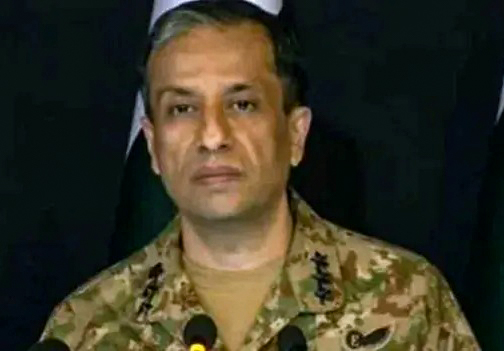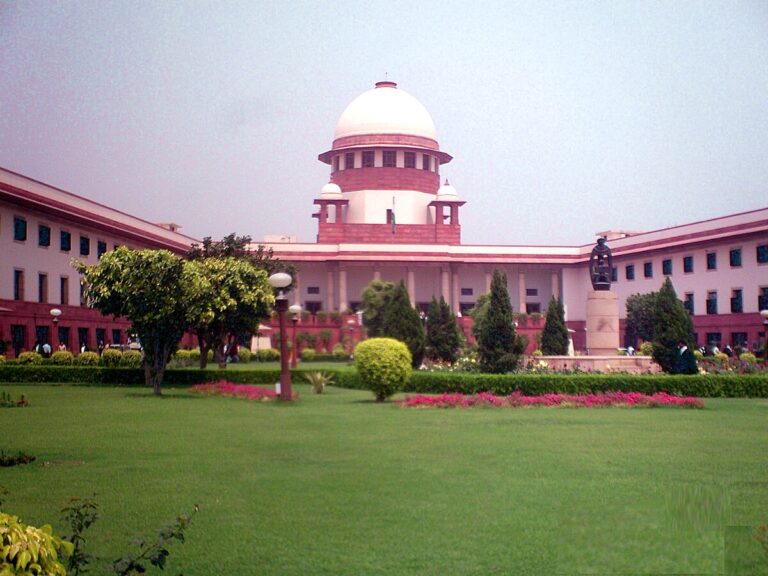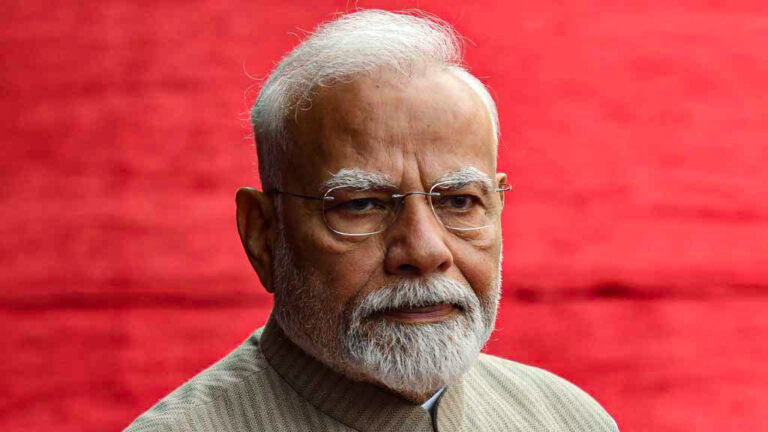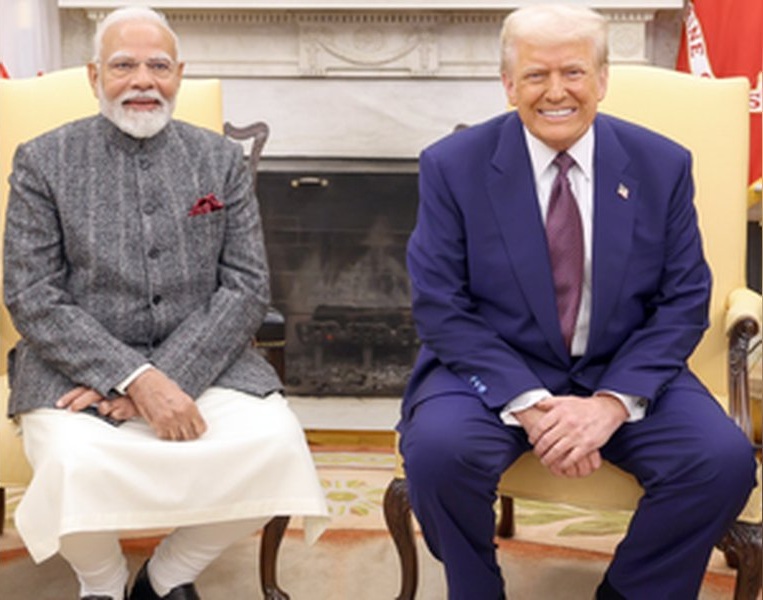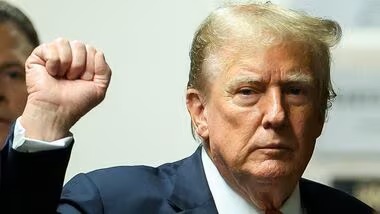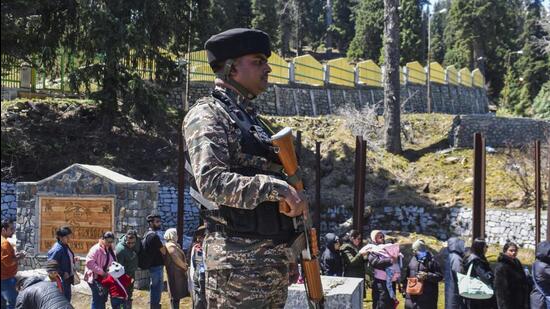
The resolution – which didn’t mention Pak— was passed after a discussion where CM Abdullah said he will not cite the attack to push for statehood.
Defence minister Rajnath Singh on Monday met Prime Minister Narendra Modi in Delhi and briefed him on the security dynamics in Jammu & Kashmir and the military’s readiness after the Pahalgam terror attack, the 40-minute meeting coming hours after the Pakistan Army opened fire at several Indian posts along the Line of Control (LoC) and violated the ceasefire for the fourth straight day.
The meeting – which came a day after Modi reiterated his resolve to give the “harshest punishment” to the terrorists – assumes significance in the context of India considering military options to target the neighbouring country for its support to terror; it has already suspended the 1960 Indus Waters Treaty, downgraded bilateral ties, and shut down the only operational land border crossing at Attari after the April 22 attack that killed 26 people.
Earlier in the day, the Jammu & Kashmir assembly unanimously passed a resolution expressing shock and anguish over the attack and resolved to defeat designs to “disturb communal harmony”. The resolution – which didn’t mention Pakistan— was passed after a discussion where chief minister Omar Abdullah said he will not cite the attack to push for statehood for the Union territory.
“As the chief minister and tourism minister of Jammu & Kashmir, I had invited these people here. It was my responsibility to ensure they were sent back safely to their homes. I could not send them back,” a visibly emotional CM said, adding that he had no words to apologise to the victims.
Last Tuesday, a group of heavily armed terrorists emerged from the woods and targeted tourists on the lush Baisaran grassland near Pahalgam in Kashmir. Twenty six people died – all men, 25 of them tourists, and 24 of them Hindus – in the attack that was reminiscent of the heydays of militancy in the 1990s and 2000s and the worst to rock the country since the 2008 Mumbai terror attacks.
Pakistan-based terror outfit Lashkar-e-Taiba’s proxy, The Resistance Front (TRF), claimed responsibility for the attack that coincided with US vice president JD Vance’s visit to India. New Delhi has since identified three Pakistani terrorists and used signal intelligence to underline Islamabad’s role in the attack.
Tensions spread along the LoC on Monday as the Pakistan Army targeted Indian posts located on the southern side of the Pir Panjal mountains (it had so far fired at posts on the northern side), officials with knowledge of developments said.
The latest round of overnight, unprovoked firing took place in the Poonch and Kupwara sectors, bruising the February 2021 ceasefire agreement and signalling the neighbouring army’s intent to further escalate hostilities along a wider front of volatile frontier after the terror attack that killed 26 people, officials aware of the matter said.
“Indian troops responded swiftly and effectively,” said an official.
Previous ceasefire violations took place north of the Pir Panjal range in sectors including Uri, Tangdhar, Kupwara and Gurez, but the latest violation in the Poonch sector in the south indicates the Pakistan Army’s intent to activate the entire frontier.
On Sunday, forward deployed Indian troops responded firmly to an earlier night-long provocation and targeted the adversary’s posts facing the Tutmari Gali and Rampur sectors in north Kashmir.
The violations are likely to intensify and expand along the LoC as the ceasefire crumbles, HT reported on Monday, citing a top official.
Separately, in Jammu, Abdullah cited sweeping protests in the region and spontaneous shutdown calls to protest against the killings as proof that terrorists had no support.
“In the past 26 years I never saw people coming out in such big numbers to condemn the attack…Terror and militancy can be wiped out only when people are with us and this is the beginning. We shouldn’t take any step that alienates the people,” he said.
“The security in J&K is not the responsibility of the elected government but I will not cite the Pahalgam attack to demand statehood. How can I push for statehood now? I don’t want such cheap politics at this stage,” he added.
On Sunday, Modi reiterated his resolve to give the “harshest” punishment to those behind the Pahalgam attack, which he said was aimed at derailing development in Kashmir as he urged the people of the country to stay united in the fight against terrorism.
Among the most visible markers of the rising tensions have been the exchange of fire across the LoC. The repeated targeting of Indian posts in north Kashmir and now the Poonch sector has sparked the most extensive cross-border exchange in four years.
The hostilities along the LoC are the worst in four years as the 2021 ceasefire had mostly held until the Pahalgam attack. Unlike isolated, brief exchanges that were quickly resolved through established channels, the current pattern involves simultaneous salvos at multiple points across most of the 740-km frontier and has persisted with increasing frequency after the Pahalgam terror attack.
Pakistan has also unveiled tit-for-tat reactions to punitive measures announced by India but neither side has thus far indicated its intent to abandon the ceasefire.
Pakistan has closed its airspace to Indian airlines, suspended all trade with India, including through third-party countries, and has threatened to suspend bilateral pacts such as the Simla Agreement. The use of heavier weapons and artillery along the LoC cannot be ruled out, as previously reported.
The two armies announced on February 25, 2021, that they had begun observing a ceasefire along the LoC from midnight of February 24. They had earlier agreed to a ceasefire in November 2003, but it was frequently violated. The ceasefire violations by the neighbouring army have traditionally been aimed at providing cover to infiltrators.
Last week, Singh articulated India’s resolve to soon punish not only those who carried out the horrific attack but also their handlers. On April 23, a day after the attack, he chaired a two-and-a-half-hour meeting of top officials to review the security situation in J&K and assessed the likely military options for retaliation.
